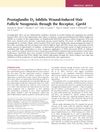Multi-Omics Empowered Deep Phenotyping of Ulcerative Colitis
May 2022
in “
bioRxiv (Cold Spring Harbor Laboratory)
”
TLDR Ulcerative colitis involves immune activation, chronic inflammation, and metabolic issues, some of which persist even during remission.
The study on ulcerative colitis (UC) used mass spectrometry-based multi-omics analyses to investigate the disease's pathomechanisms in 12 patients. Proteome profiling of tissue samples from five colon locations revealed activation of immune cells and hypoxic stress, with a downregulation of mitochondrial proteins and promotion of wound healing activities. Blood plasma analyses showed chronic inflammation and platelet activation, along with deregulation of bile acids, eicosanoids, and gut microbiome-derived metabolites. During remission, some biomarker levels returned to normal, but not all, suggesting that certain pathomechanisms, such as those related to gut functions and metabolic dysregulation, may not fully resolve. The study provided insights into the local and systemic effects of UC and identified biomarker profiles associated with its molecular mechanisms.
